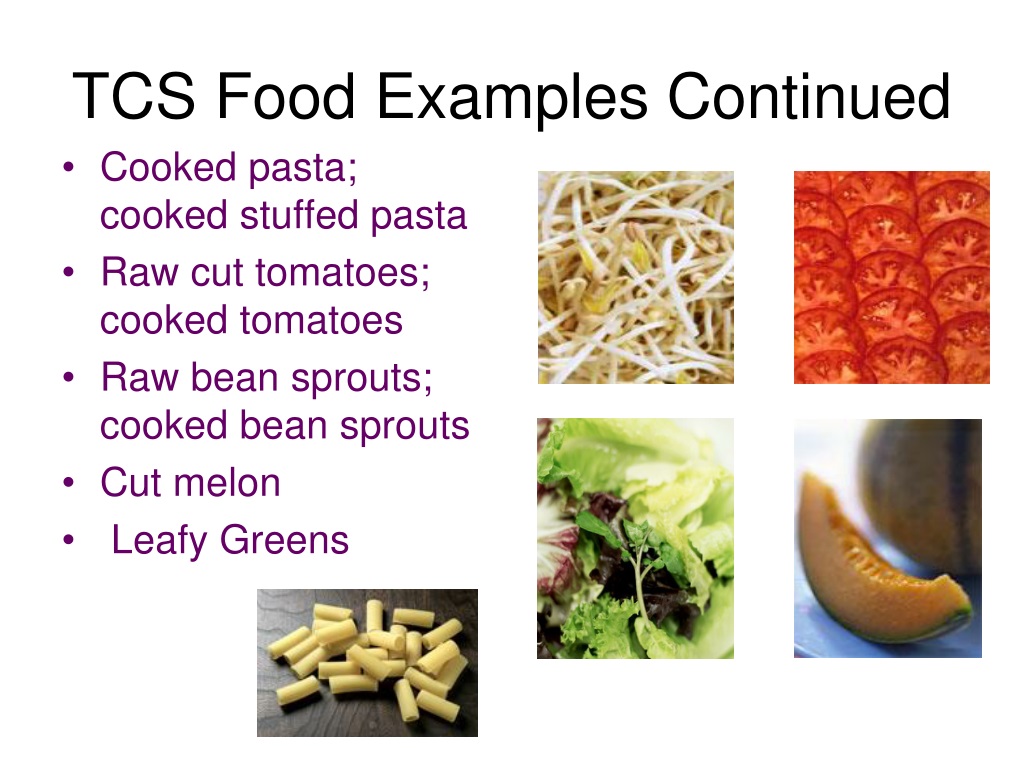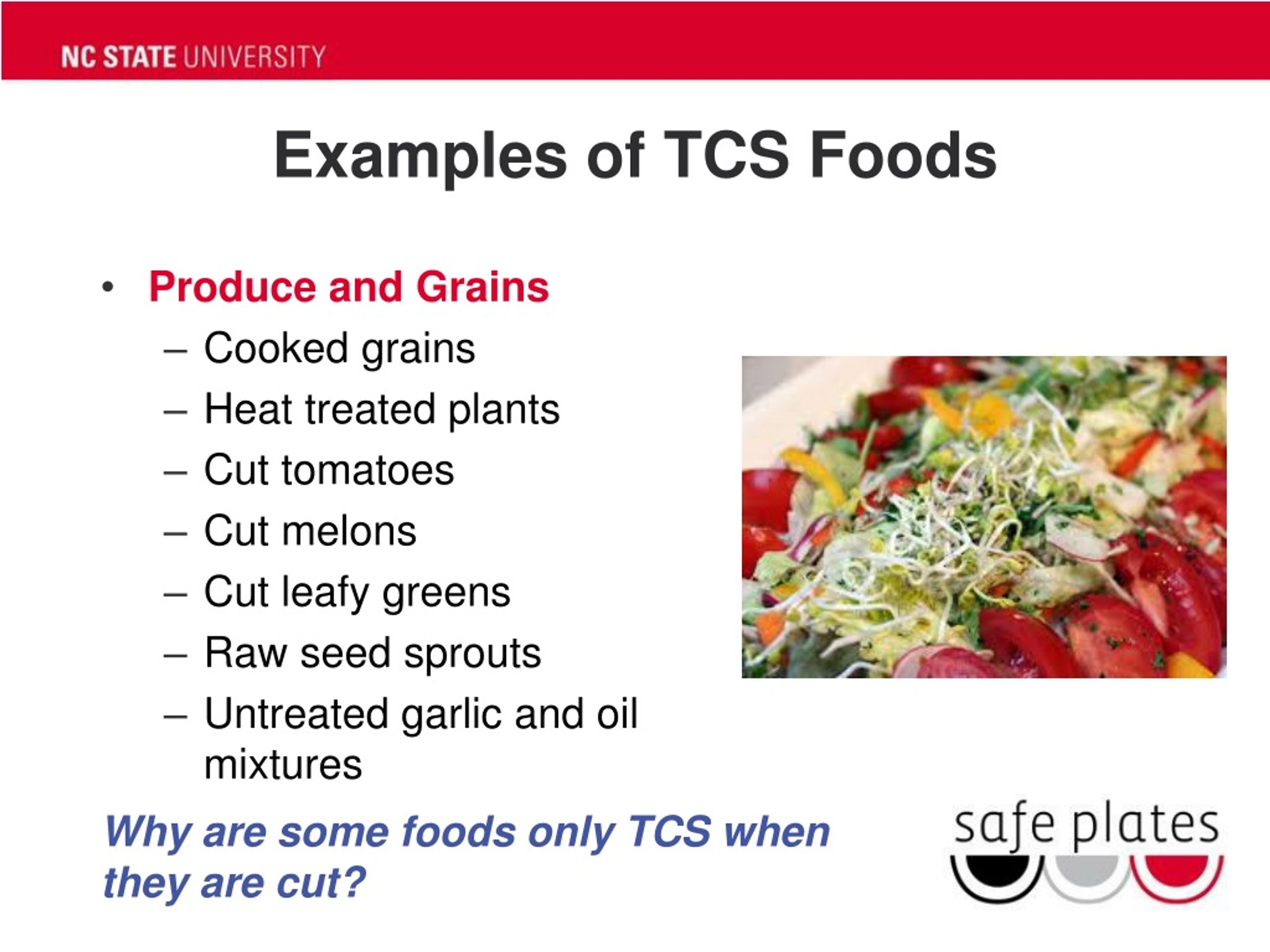Understanding TCS Foods: Examples & Food Safety Guide
Do you know what lurks unseen in your kitchen, potentially jeopardizing the health of your customers and the reputation of your business? The answer lies in understanding Time/Temperature Control for Safety (TCS) foods, the silent culprits behind many foodborne illnesses.
The world of food safety is complex, a delicate dance between providing delicious meals and ensuring the health and well-being of those who consume them. Central to this intricate process is the concept of Time/Temperature Control for Safety (TCS) foods, a crucial aspect of any robust food safety program. These are foods that require careful management of both time and temperature to prevent the growth of harmful bacteria and pathogens.
Consider the following scenario: a bustling commercial kitchen, the heart of a busy restaurant. Staff are working diligently, preparing a diverse menu. Amidst the controlled chaos, a seemingly innocuous ingredient, cooked rice, sits at room temperature for an extended period. Unbeknownst to those involved, this seemingly harmless act can set the stage for a potential outbreak of foodborne illness.
Many foods provide the ideal environment for bacteria to flourish rapidly if not handled, stored, or cooked properly. These foods, known as TCS foods, pose a higher risk of contamination if they are not kept at specific temperatures to prevent the growth of harmful microorganisms or the formation of toxins. These foods require special attention to make sure they stay fresh. This is because they contain nutrients, moisture, and a pH level that bacteria find appealing. If TCS foods are exposed to the "temperature danger zone" (between 41F (5C) and 135F (57C)), they can grow bacteria quickly and can easily become hazardous, therefore careful monitoring is essential.
Maintaining the safety of TCS foods requires a multifaceted approach. Proper cooking, cooling, storage, and reheating are all critical components. For example, hot TCS foods should be kept at 140F (60C) or above, while cold TCS foods should be held at 40F (4C) or below. Foods that have been exposed to the temperature danger zone should be reheated to 165F (74C) or cooled to 40F (4C) within a specific timeframe. These measures are vital to prevent the proliferation of dangerous bacteria, such as salmonella, listeria, and E. coli, which can cause foodborne illness and put your customers and your business at serious risk.
The temperature danger zone is a critical concept in food safety. It refers to the temperature range between 41F (5C) and 135F (57C), where bacteria thrive and multiply rapidly. When TCS foods remain within this zone for an extended time, the risk of bacterial growth increases significantly. This means that it is harder to prevent pathogens from causing foodborne illnesses.
- Shawnalynn90 More Latest Erotic Content Updates
- Watch Movies Free On Popcornflix Your Guide To Free Streaming
Food items that need time and temperature controls to keep them safe are known as TCS foods. Examples of TCS foods include milk and milk products, meats, poultry, seafood, ready-to-eat (RTE) foods, and certain cut vegetables, so if you aren't familiar with TCS foods, you could be neglecting a big part of your food safety program.
Understanding which foods are considered TCS and their temperature requirements can significantly reduce the risk of contamination and foodborne illnesses. This includes knowing which foods are most likely to be TCS foods. The most common items on TCS food list include seafood (e.g., fish and shellfish) raw meat and meat products (e.g., ground meat mixtures and processed meat) cut leafy greens and fruit. In fact, any food with low acidity, high moisture, and abundant nutrients, then the food is most likely a TCS food. These foods, by their very nature, may naturally harbor a higher initial microbial load, either from the raw ingredients or due to processing methods. This makes proper cooking and storage critical to reduce the risk of foodborne pathogens.
The correct handling of TCS foods is not merely a matter of following regulations; it is a fundamental responsibility for anyone involved in the food industry. By understanding and implementing the principles of TCS food safety, businesses can protect their customers, safeguard their reputations, and contribute to a healthier and safer dining experience for all. Thaw TCS foods in a refrigerator, under cold running water, or in a microwave, never at room temperature. Take medication only in a break area, and keep medications in a locker.
What are TCS Foods?
Foods that require Time/Temperature Control for Safety (TCS) are those that support the rapid growth of microorganisms and the production of toxins. These foods are often associated with outbreaks of foodborne illness. Recognizing TCS food and ensuring safe food characteristics of TCS food, the definition of TCS food is based on the following characteristics of the food: Ph, or acidity Water activity (aw) Interaction of ph and aw Heat treatment Packaging Examples of TCS food food from animal origin that is raw, cooked.
Examples of TCS foods include meats, poultry, fish, shellfish, dairy products, and cooked rice and pasta (more on this in a moment!), and cooked plant foods, like pasta, rice, potatoes, and tofu.
Here's a table summarizing the characteristics of TCS foods:
| Characteristic | Description | Importance |
|---|---|---|
| Nutrient Rich | Provide essential nutrients for bacterial growth. | Bacteria can multiply rapidly, increasing the risk of illness. |
| High Moisture Content | Water is essential for bacterial survival and growth. | Foods with high moisture content support microbial growth. |
| Neutral or Slightly Acidic pH | Most bacteria thrive in a pH range of 4.6 to 7.5. | Acidic foods are less susceptible to bacterial growth. |
| Time/Temperature Abuse | Exposure to the Temperature Danger Zone (41F - 135F or 5C - 57C) | Bacteria multiply exponentially in this temperature range. |
| Potential for Contamination | Can be contaminated with harmful bacteria or toxins. | Requires careful handling, cooking, and storage. |
Understanding TCS foods is not just about memorizing a list; it's about recognizing the factors that contribute to bacterial growth. It is essential to limit pathogenic microorganism growth or toxin formation, and to be aware of the conditions that will promote bacterial multiplication.
Temperature Danger Zone: A Breeding Ground
The temperature danger zone, typically between 41F (5C) and 135F (57C), is a hotbed for bacterial growth. This temperature range provides the ideal conditions for bacteria to multiply rapidly. TCS foods that remain in this zone for an extended period become increasingly hazardous. The longer the food remains in the danger zone, the greater the risk of bacterial multiplication and the higher the likelihood of foodborne illness.
To keep hot TCS foods at 140F (60C) or above, and cold TCS foods at 40F (4C) or below. If TCS foods are exposed to the danger zone, they should be reheated to 165F (74C) or cooled to 40F (4C) within a certain timeframe to prevent foodborne illness. The time the food was removed from temperature control. Food is served or discarded within six hours. Food in unmarked containers or past the six hour time period shall be discarded.
Key Practices for TCS Food Safety
To maintain the safety of TCS foods, follow the appropriate practices. This includes:
- Proper Cooking: Cooking TCS foods to the correct internal temperature is essential to kill harmful bacteria.
- Rapid Cooling: Cooling hot foods rapidly from 135F to 70F (57C to 21C) within two hours, and then to 41F (5C) or below within an additional four hours.
- Safe Storage: Storing TCS foods at the correct temperatures in clean and sanitized storage areas.
- Thawing: Thawing frozen TCS foods safely in the refrigerator, under cold running water, or in a microwave.
- Reheating: Reheating cooked foods to a minimum internal temperature of 165F (74C) for 15 seconds.
These measures collectively reduce the risk of bacterial contamination and ensure the safety of your food.
TCS Food Examples
Examples of TCS foods are extensive and encompass a wide array of commonly used ingredients. These foods require more careful handling than others.
The following list provides examples found in many commercial kitchens.
- Milk and milk products
- Meats (beef, pork, lamb, etc.)
- Poultry
- Seafood (fish, shellfish, etc.)
- Eggs (raw and cooked)
- Cut leafy greens and fruit
- Cooked rice and pasta
- Tofu and soy products
- Dairy products like cheese and milk
When not stored, cooked, cooled, or reheated properly, TCS foods can become breeding grounds for dangerous bacteria like salmonella, listeria, or e. Coli.
Importance of Maintaining TCS Food Safety
Maintaining TCS food safety is not just a regulatory requirement; it is a crucial aspect of protecting public health and ensuring the success of a food service establishment. Contaminated food can lead to foodborne illnesses, which can cause a range of symptoms from mild discomfort to severe illness, hospitalization, or even death.
In addition to protecting public health, TCS food safety also helps to protect your business. A foodborne illness outbreak can damage your reputation, lead to legal issues, and result in financial losses.
A crucial example would be cooked rice. Cooked rice falls into this category because it is a staple food that can easily grow bacteria if not stored and handled properly.
Remember: Salad dressings prepared from a mix source: Ut food science department can test products for aw.
Understanding and adhering to the principles of TCS food safety is therefore essential for anyone working in the food industry.
Frequently Asked Questions about TCS Foods:
- What is the temperature danger zone? The temperature danger zone is the range between 41F (5C) and 135F (57C), where bacteria multiply rapidly.
- What should I do if TCS food has been in the danger zone? Reheat it to 165F (74C) or cool it to 40F (4C) within a specific timeframe.
- How can I prevent the growth of bacteria in TCS foods? By following proper cooking, cooling, storage, and reheating procedures.
- What precautions should be taken when dealing with TCS foods? Always ensure that TCS foods are handled with care and kept at the correct temperatures.
To ensure food safety, its essential to keep hot TCS foods at 140F (60C) or above, and cold TCS foods at 40F (4C) or below. If TCS foods are exposed to the danger zone, they should be reheated to 165F (74C) or cooled to 40F (4C) within a certain timeframe to prevent foodborne illness.
- Melvin Combs Diddy The Untold Story Of Tragedy Legacy
- Mika Lafuente Nudes Leaks Onlyfans Porn Videos Watch Now

PPT Food Safety Basics for PICs and Employees PowerPoint Presentation

PPT Safe Plates for Home Food Handlers Module 2 Time /Temperature

Food Safety Part 2 Temperature Control Virtual Lab School